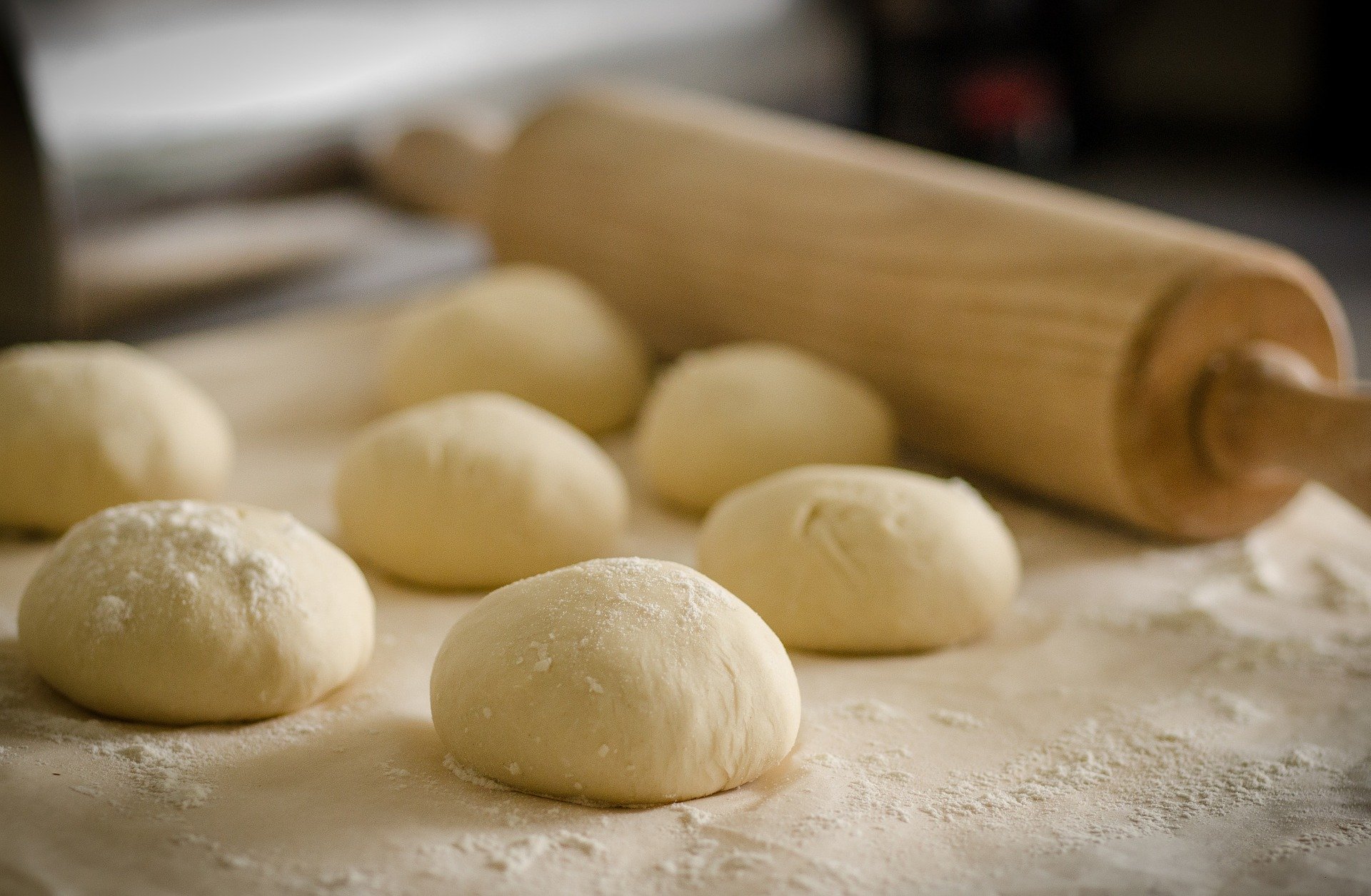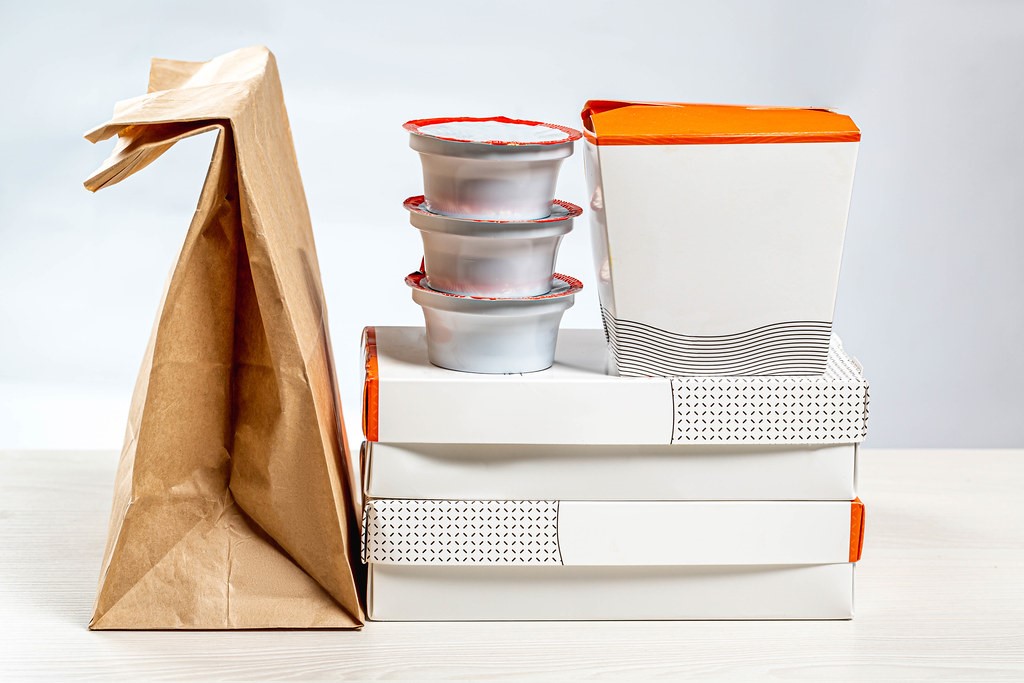Restaurant dining has been put on hold thanks to stay-at-home and social distancing orders meant to slow the spread of COVID-19, forcing many to close and leaving others barely surviving. For restaurants that are still operating, coming up with ways to hold onto customers who are no longer allowed into dining rooms has been tricky.
Delivery is one option, but it’s expensive. Businesses that use third-party services like Grubhub or UberEats generally have to pay them a fee, which could eat into margins that are already razor thin. One way to avoid that problem: selling groceries.
Why Groceries?
From large chains to local eateries, restaurants are increasingly turning to grocery sales as a much-needed source of income during this crisis. They sell items they already offer up to customers, just in a different form. Opening up temporary grocery stores helps bump up the number of supermarkets and provides a way to support struggling suppliers.

Grocery stores have witnessed a surge in demand, leading to empty shelves in some stores. At the same time, many grocery chains have forced stores to reduce hours and regulate how many customers may enter at once, causing long wait times to get inside. Even though grocery shopping is still allowed for people who aren’t sick or elderly, more grocery options can help share the load big markets have had to bear in recent weeks.
It provides customers an opportunity to grab a few necessities without fighting for a coveted grocery delivery slot or braving a crowded store. And while local supermarket may be all out of flour – a hot commodity as people sheltering at home pick up baking projects – local restaurants probably have plenty. That’s because different supply chains provide food to restaurants rather than grocery stores.
Related: How Grocery Stores are Using Robots During COVID-19
While grocery stores sell five-pound bags of flour and are having trouble keeping shelves stocked right now, restaurants and bakeries have easy access to flour — just not ready for consumer to purchase. With people ordering from grocery stores more and eating at restaurants less, it can be difficult to pivot the food supply accordingly. Grocery stores can’t stock 50-pound bags of flour onto their shelves. A restaurant, on the other hand, can fill up a Ziploc bag for customers and find other ways to sell their stock.
Many of the restaurants-turned-grocery stores are offering “contact-free” service in which customers place orders by phone or online and the goods are delivered straight to the trunk or backseat of the car. Others are preparing boxes of produce for pickup at specific times or urging customers to call in and see what kinds of dry goods and produce might be available.
Who Is in on It?
Several large chains across the US have started selling grocery items, which vary greatly depending on the restaurant. Some offer pantry items and perishables, such as meats, vegetables, fruit, cheese, milk and eggs. One chain that hopped on the trend is Subway, which is selling groceries at 250 of its stores in California, Connecticut, Oregon, Tennessee and Washington. Potbelly Sandwich Shop franchises launched Potbelly Pantry, offering mostly foods that the chain uses to make its sandwiches, such as meat, cheese and bread.
Panera Bread is also selling groceries items including bagels, bread, gallons of milk, yogurt and fresh produce. “From limited choices on grocery shelves to the growing need to limit the number of trips outside of the home, it is an incredibly stressful time when it comes to putting wholesome food on the table,” said Niren Chaudhary, Panera CEO, in a press release, adding that Panera Grocery can help “provide better access to essential items that are increasingly harder to come by.”
As fears of catching coronavirus while grocery shopping increase, bespoke grocery locations have become popular attractions as well. In Toronto, Canada, a handful of restaurateurs have turned their businesses into bodegas selling basic groceries. Others now offer food subscription boxes or DIY meal kits.
Buca, a Toronto-based chain of Italian restaurants, is allowing customers to recreate the restaurant experience at home with an order of fresh pasta and sauce or pizza dough for a DIY pie kit. Veteran pizza maker David Mattachioni has turned his Junction Triangle restaurant into a market. Shoppers can still get his wood-fired pies to go, but can also grab some milk, butter, tomatoes, cheese, olive oil, house-made sourdough or focaccia and wine.
View this post on Instagram
The Local Public Eatery has temporarily relaunched both of its locations as the Local Corner Store, a virtual supermarket where customers can order the bar’s pub grub but also fruits and vegetables, basic pantry items including sriracha, as well as toilet paper and booze. Similarly, Joey Restaurants launched The Joey Market, a “one-stop-shop” for grocery essentials and specialized meal kits.
The New Normal – For Now
It remains to be seen whether this new business model of restaurants selling groceries will endure post-pandemic. Some restaurant operators aren’t sure if grocery sales will continue, with Panera seeing it as a “kind of a tipping point to see what our customers need.” The future is especially difficult to predict during this unprecedented time, but for now, this is the new normal.









Join or login to leave a comment
JOIN LOGIN